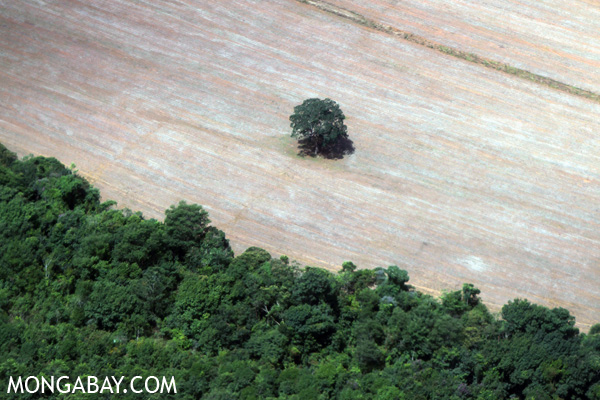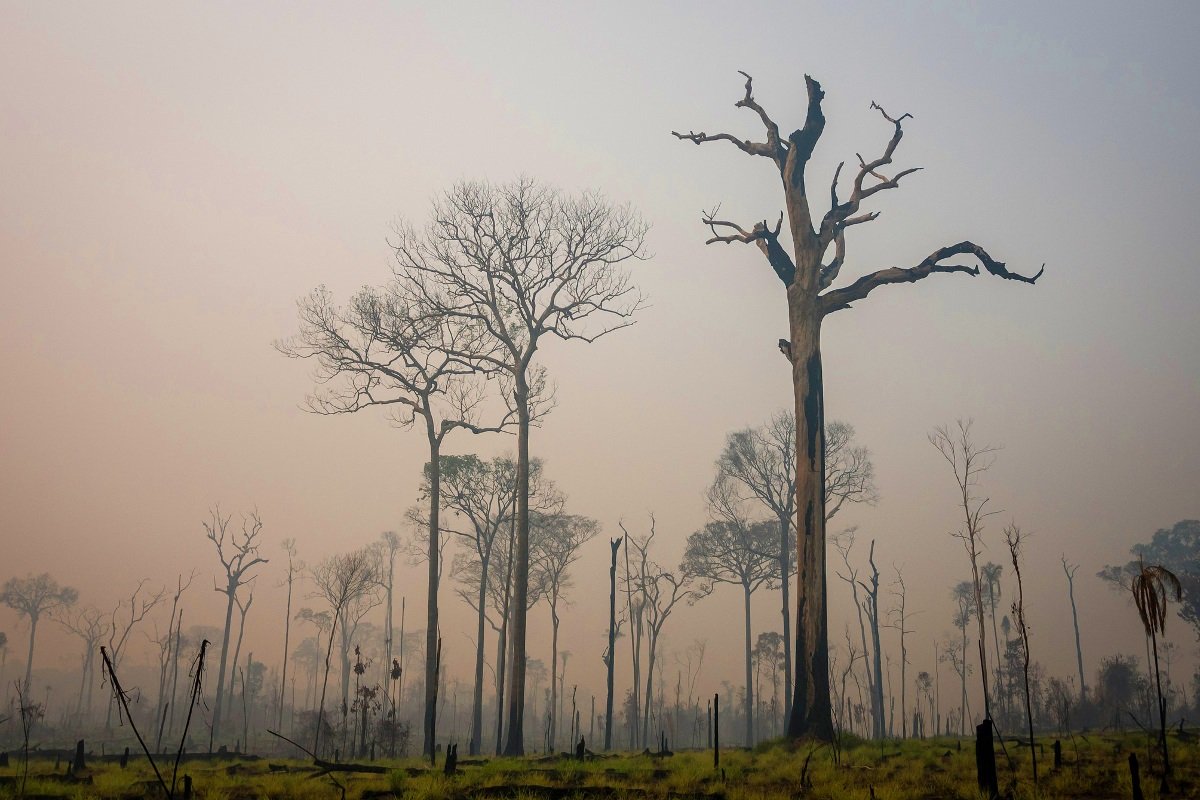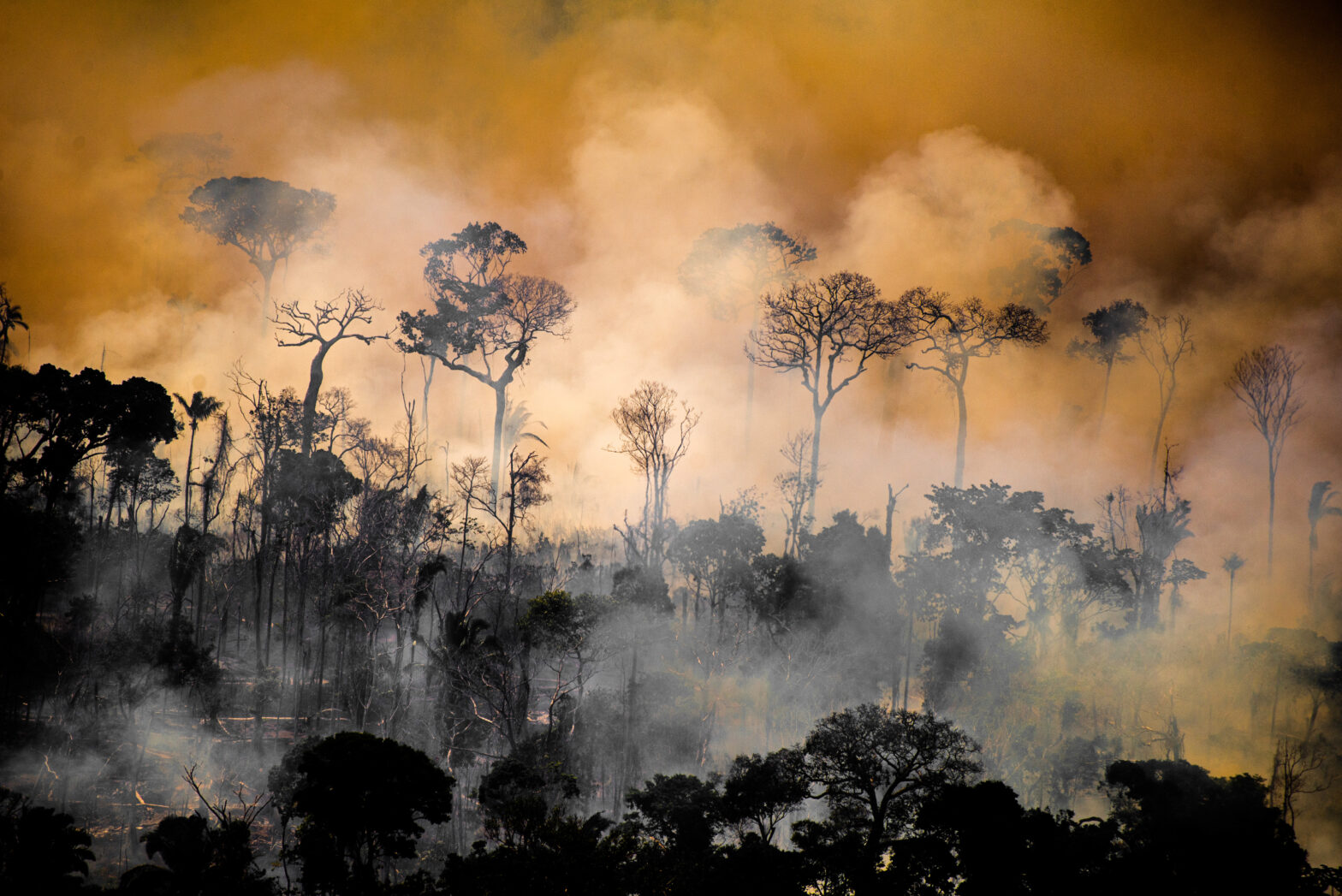Deforestation in the Brazil Amazon continues to pace well ahead of last year’s rate, shows data released today by Imazon.

Lone Brazil nut tree standing in an area recently cleared for soy in the state of Mato Grosso, Brazil. Photo by Rhett A. Butler
According to the Brazilian NGO’s analysis of satellite data, 1,373 square kilometers of rainforest was chopped down between August 2014 and December 2014, a 224 percent increase relative to the prior corresponding period a year before. Forest degradation from selective logging and fires is pacing 664 percent ahead of last year. Forest degradation typically precedes outright clearing.
The data is consistent with figures recently released by INPE, Brazil’s National Space Research Institute, which showed deforestation 217 percent higher than the year-earlier period.


While still preliminary — the “deforestation year” runs from August to July, coinciding with the peak of the dry season — the numbers have raised fears that Brazil’s gains in reducing deforestation over the past decade may be in danger of reversing. Adding to these concerns is President Dilma Rousseff’s decision late last month to appoint two controversial politicians to key administrative positions: senator Katia Abreu as Minister of Agriculture and congressman Aldo Rebelo as Minister of Science, Technology and Innovation.
Both officials have been heavily criticized by environmentalists. Greens call Abreu “The Chainsaw Queen” for her lobbying on behalf of agribusiness interests to relax environmental laws. Rebelo, who as sports minister won scorn for his mishandling of preparations ahead of last year’s World Cup, has been called out for claiming there’s no scientific evidence to suggest that humans are contributing to global warming.
In their new roles, Abreu and Rebelo have considerable sway over land use policy in Brazil, which until now has been championed as a model for countries seeking to grow their economies without destroying forests. Over the past decade, Brazilian agriculture has rapidly expanded at the same time that annual forest loss in the Amazon dropped 80 percent.
Any significant set backs in Brazil will be double troubling for environmentalists given rising deforestation outside the Brazilian Amazon. The Guyanas, Peru, and Ecuador have all experienced an upward trend in forest loss in recent years, according to data from Global Forest Watch.


– This report was originally published in Mongabay and is republished by an agreement to share content.





